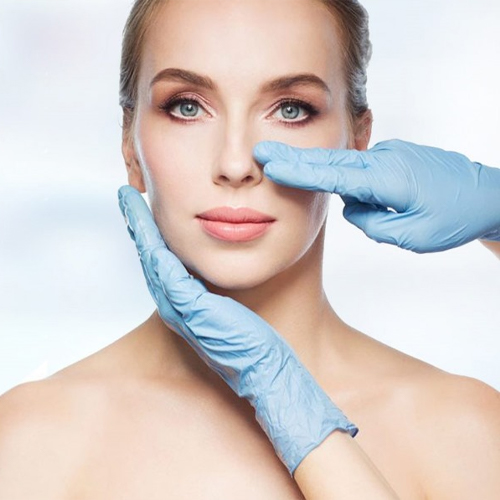Nose reshaping, or rhinoplasty, is a popular cosmetic surgical procedure designed to enhance the appearance and functionality of the nose. This procedure can address various aesthetic concerns, such as size, shape, and symmetry, as well as functional issues like breathing difficulties. In this blog post, we will explore what rhinoplasty involves, the different types of procedures, and what to expect before, during, and after surgery.
What is Rhinoplasty?
Rhinoplasty is a surgical procedure aimed at reshaping the nose to improve its appearance or function. This surgery can correct a wide range of issues, including:
- Size: Reducing or increasing the overall size of the nose.
- Shape: Modifying the shape of the nasal tip, bridge, or nostrils.
- Symmetry: Correcting asymmetry or crookedness.
- Breathing: Improving airflow and resolving issues such as a deviated septum.
Types of Rhinoplasty Procedures
There are several variations of rhinoplasty, each tailored to meet specific needs and goals:
-
Open Rhinoplasty
- Involves an incision across the columella (the strip of tissue between the nostrils).
- Provides better visibility and access to the nasal structures.
- Ideal for more complex reshaping and reconstruction.
-
Closed Rhinoplasty
- Involves incisions inside the nostrils, leaving no visible scars.
- Suitable for less extensive modifications.
- Shorter recovery time compared to open rhinoplasty.
-
Revision Rhinoplasty
- Performed to correct or improve the results of a previous rhinoplasty.
- Can address aesthetic or functional issues that persist after the initial surgery.
- Typically more complex than primary rhinoplasty.
-
Functional Rhinoplasty
- Focuses on improving nasal function and breathing.
- Often involves correcting a deviated septum or other structural issues.
The Rhinoplasty Procedure
The rhinoplasty process involves several key steps:
1. Consultation
- The first step is a consultation with a board-certified plastic surgeon. During this visit, you will discuss your goals, review your medical history, and determine the best surgical plan for your needs. The surgeon will also examine your nose and take photographs.
2. Pre-Surgery Preparation
- You will receive specific instructions on how to prepare for surgery, including guidelines on eating, drinking, and taking or avoiding certain medications. You may also be asked to undergo a medical evaluation or adjust your current medications.
3. Anesthesia
- Rhinoplasty is typically performed under general anesthesia, so you will be asleep during the procedure. In some cases, local anesthesia with sedation may be used.
4. Incision and Reshaping
- The surgeon will make the necessary incisions based on the type of rhinoplasty being performed (open or closed).
- The underlying nasal structures are reshaped to achieve the desired outcome. This may involve removing or adding cartilage, reshaping the nasal bones, and refining the nasal tip.
- If necessary, functional issues such as a deviated septum are corrected.
5. Closing the Incisions
- The incisions are closed with sutures, and surgical tape or splints may be used to support the healing process.
Recovery and Aftercare
1. Initial Recovery
- After the surgery, you will be taken to a recovery area where you will be closely monitored. Your nose may be packed with gauze, and you will likely have a splint on your nose to support the new shape.
- You may experience discomfort, swelling, and bruising, which can be managed with prescribed pain medications and cold compresses.
2. Follow-Up Appointments
- You will have follow-up appointments with your surgeon to monitor your healing process and ensure that the incisions are healing properly. It’s important to attend all scheduled appointments.
3. Long-Term Care
- Avoid strenuous activities and heavy lifting for several weeks. Your surgeon will provide detailed instructions on when you can resume normal activities and exercise.
- It may take several months for the swelling to completely subside and for the final results to become apparent.
Benefits of Rhinoplasty
- Enhanced Appearance: Improves the size, shape, and symmetry of the nose to achieve a more balanced and attractive facial profile.
- Improved Breathing: Corrects structural issues that impede airflow, leading to better breathing and overall nasal function.
- Boosted Self-Confidence: Many individuals experience a significant boost in self-esteem and body image.
- Customization: Rhinoplasty can be tailored to meet the specific aesthetic and functional needs of each patient.
Risks and Considerations
As with any surgery, rhinoplasty carries certain risks, including:
- Infection
- Scarring
- Changes in skin sensation
- Asymmetry or dissatisfaction with the results
- Anesthesia risks
Choosing a qualified and experienced surgeon is crucial to minimize these risks and achieve the best possible outcome.


